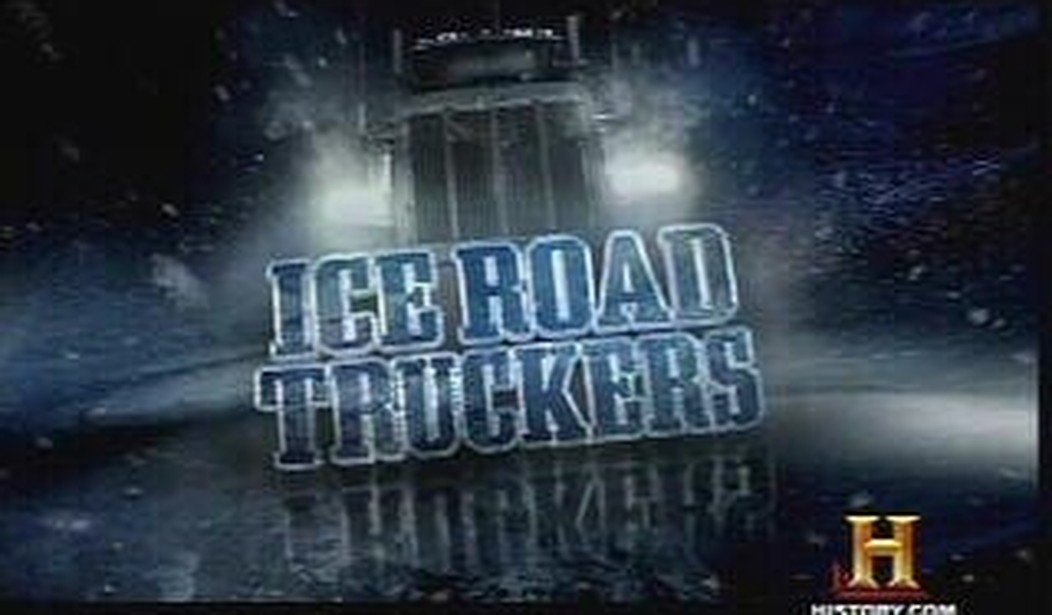What makes Ice Road Truckers—now in its eleventh season on the History Channel—work?
The unforgiving setting in the Alaskan and Canadian backcountry is a big part of the charm. Hitch that to the unique challenges facing the big-rig drivers in this popular reality show and you’ve got a wide load of dramatic potential. And don’t forget those mighty trucks.
But it’s the people behind the wheel that keep bringing viewers back for more.
The onset of winter serves as the go signal for the professionals whose job entails making perilous journeys to deliver essential goods to isolated north continent communities. When things warm up, those same roads turn to impassable slush.
The drivers on the show are masterful at getting themselves out of some serious FUBAR situations. When a tie-rod falls off and drags in the ice 200 miles from the home base at Winnipeg, sometimes it’s a matter of duct tape and luck. When a misjudged turn sends a driver into the ditch, the wait for assistance may last hours. To run out of gas is to face a cab quickly descending into subzero temperatures.
How cold is it? Cold enough to freeze the surface of deep lakes solid enough for multi-ton trucks to drive over. One of the most perilous aspects of the job is the ice crossing. If the ice fails badly enough, the truck can sink down to the depths within seconds. The drivers are supplied with ice axes with which to gain purchase on the surrounding ice as they (hopefully) jump clear of the doomed rig.
At the start of any season, Ice Road Truckers set out to bank some cash and run some roads, but actual results may vary.
Posted by Ice Road Truckers on HISTORY on Wednesday, August 30, 2017
The new season kicked off with a poignant note due to the offseason death of well-regarded driver Darrell Ward, killed in an airplane crash. Darrell was the archetypal mentor, out there racking up loads for his family back home. He would lay it on the line when things weren’t right, and would drive to the ends of the earth—literally—to help a fellow driver. He will be greatly missed.
Alongside Ward in the start-up trucking outfit meant to compete with big-dog Polar Industries was Lisa Kelly, until recently IRT’s only female driver. A one-woman show since Ward’s passing, Kelly must persevere in a distinctly male-dominated occupation. Bouncing madly over brutal depressions in roads that are starting to thaw, or risking everything on a midnight ice crossing, she establishes herself as a consummate professional who can be relied upon to deliver the goods.
A new female driver, Stephanie Custance, came aboard toward the end of last season and had some problems. An attractive single mother, the young driver seems sincere about wanting to succeed in this rugged game, but in Episode One of the current season she melted down trying to install a set of tire chains that weigh almost as much she does. From her website bio: “Will she be able to hack it on the toughest roads in North America?”
Another veteran and fan favorite is Alex Debogorski. More seasoned than his fellow drivers, Alex endears himself to viewers with a good-natured outlook and a hearty laugh that follows every close call he survives. He is not shy about invoking his Christian faith; in one episode he openly prayed (“Our Father”) as the ice menacingly cracked beneath him on a frozen lake.
From driver Todd Dewey’s IRT website bio: “A mountain log hauler by trade, Todd returns to Polar Industries during the logging offseason to cash in on the lucrative winter roads.” Dewey is just what you’d expect from a “get-er-done” full-time driver. Whether cruising along on schedule or facing the worst conditions imaginable, he always takes a determined personal interest in overcoming the worst these treacherous back roads throw his way.
When Art Burke showed up in one of the earliest seasons, this viewer was prepared not to like him. He complained — a lot — and his attitude about the job often veered toward the negative. It didn’t bother me that Burke laced most of his complaints with profanity; that was funny. He was, shall we say “squirrely” enough to cast doubt about whether he would eventually exhibit the can-do attributes that make being part of the IRT team special.
Two things: Burke would probably call the preceding sentence “bulls**t,” and, he’s become my favorite driver. On the road, his exclamations are often bleeped, but there’s something admirable in the way he comes out on mornings colder than the proverbial witch’s tit, jagged on coffee, ready to take on whatever Polar boss Mark Kohaykewych has for him to deliver.
Kohaykewych, the show’s desk jockey, exhibits a managerial style that blends concern for the safety of his drivers with abiding responsibility to overcome obstacles and get what is needed to where it’s needed.
Ice Road Truckers is set in a part of North America whose unique climate renders roads impassable for all but the coldest time of year. On every trip, the trucks defy the very concept of wear-and-tear, and the loads they carry often defy the limits of weights and measures.
The show works because of the people. The draw that has made the series a success is all about following a band of hard-driving brothers and sisters as they do their jobs, deliver the goods, survive the season, and return to whatever it is they do until the roads freeze again.
But first, as Art Burke might say, “We have to get over this (expletive deleted) hill.”









Join the conversation as a VIP Member